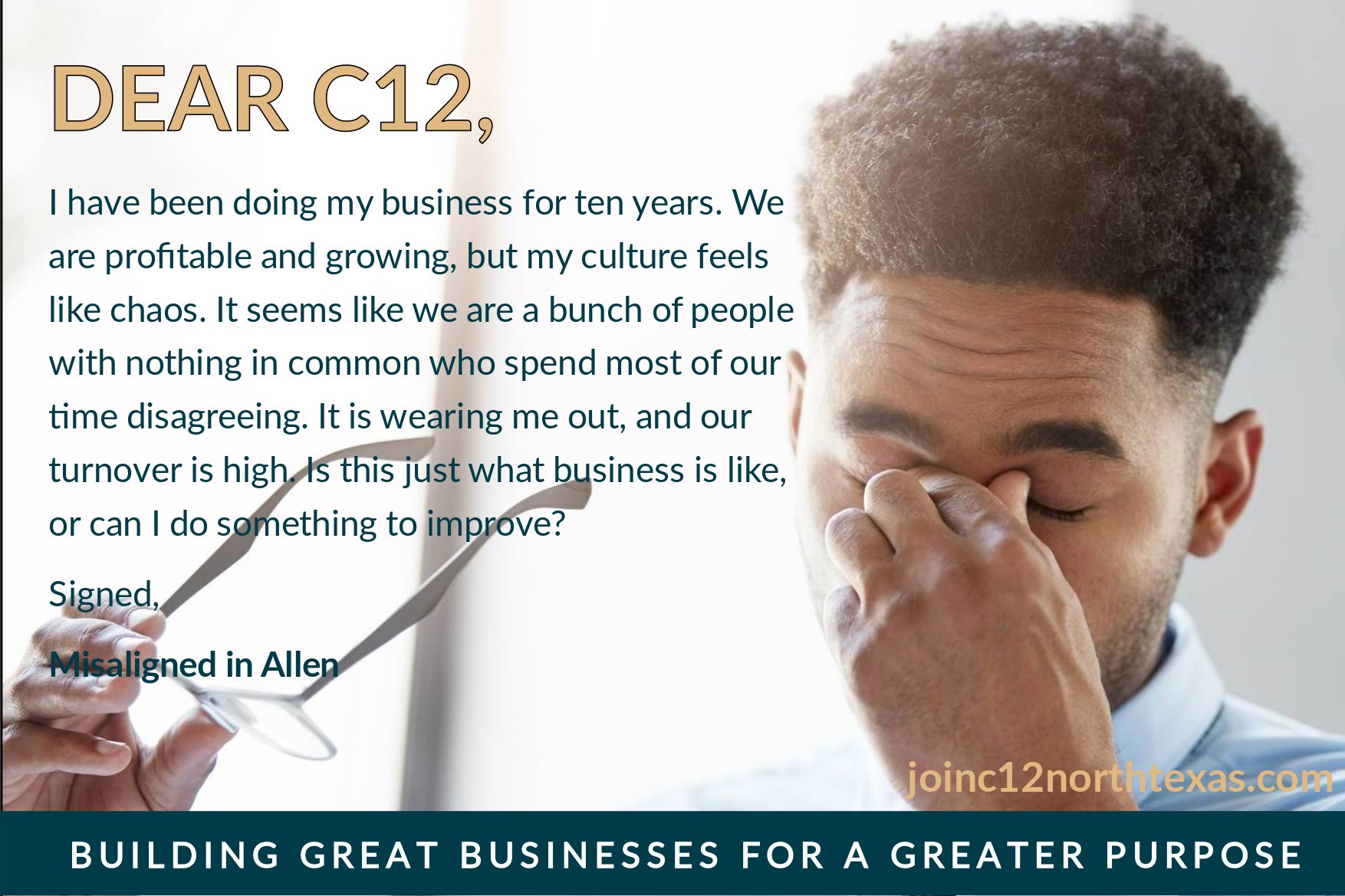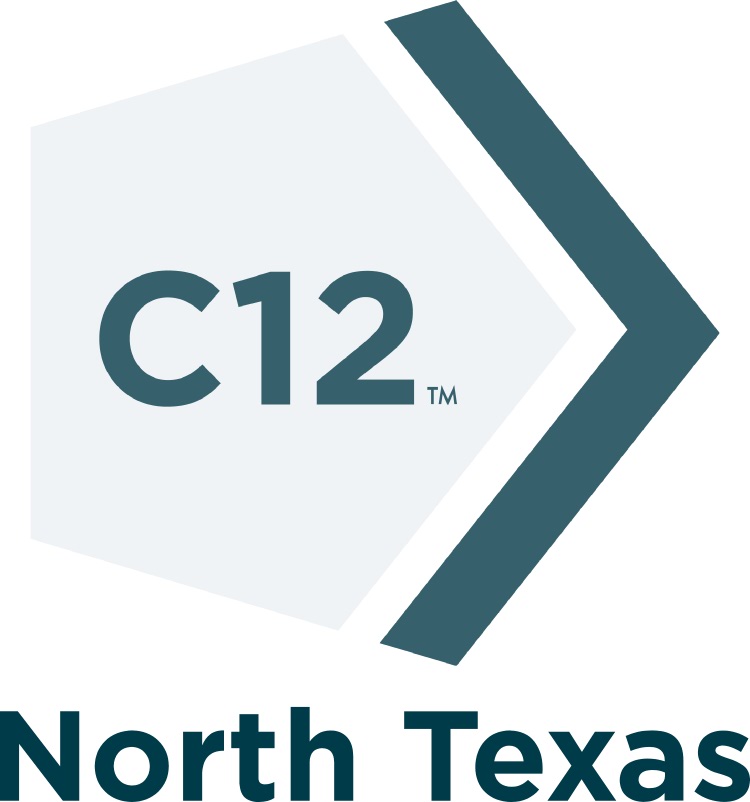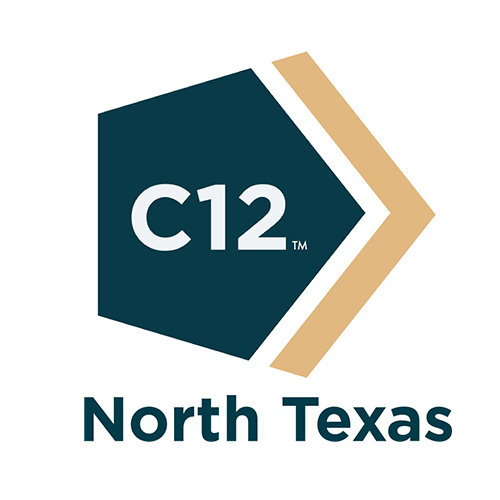
10 May From Chaos to Alignment
Hi, Tom.
I have been doing my business for ten years. We are profitable and growing, but my culture feels like chaos. It seems like we are a bunch of people with nothing in common who spend most of our time disagreeing. It is wearing me out, and our turnover is high. Is this just what business is like, or can I do something to improve?
Signed,
Misaligned in Allen
Insights for Leaders
Dear Misaligned,
First of all, congratulations on having a profitable and growing company! Most businesses in America do not make it ten years. I commend you and your team for persevering.
But it does sound painful. We often use the illustration of a group of people in a canoe, each paddling furiously in random directions. Unsurprising, progress is slow because many are paddling “away” from the end goal. Only a few are contributing to forward progress. As a result, everyone is frustrated because it is exhausting.
The good news is that it does not have to be that way for you or your employees. Imagine how productive you would be if everyone “rowed” in the same direction!
Patrick Lencioni has written many widely read books about organizational challenges. He uses a simple story framework to cover team dysfunctions, hiring processes, unproductive meetings, and more. He wrote “The Advantage” to summarize his suggestions from those books for aligning an organization. Lencioni contends that organizational health through alignment is the critical competitive advantage.
He recommends the organization practice answering six questions regularly and consistently. (I have added a seventh question (#4) to his list.) That is, everyone should know the same answers to the questions.
1. Why do we exist?
Great companies know the answer to this question. It is an idealistic belief that the company matters because it has a high goal. If you give the simple answer, “to make a profit” or “to provide jobs,” I suggest you look for something more profound. As Simon Sinek famously argued in his book, “Start With Why,” knowing that greater purpose attracts the right people, gives them a context to devote their greatest energies, and serves as a rally cry during the inevitable difficult periods every company faces from time-to-time. One of my clients had a great statement that succinctly answered his why. He said that his company “served others to change lives.” Changing lives motivated this owner and his team. What fundamentally motives you?
2. What do we do?
This seems like an easy question. After all, if you make widgets, the answer is, well, widgets. The danger is that by concentrating on “widgets,” your team might miss the benefit that your customers receive. That’s why I recommend you clarify the benefit that your customer receives instead of concentrating on your product or service list to answer this question. For example, a bookkeeping firm’s answer is not, “we record your transactions and reconcile your accounts.” Instead, their answer to a small business owner might be, “we give you your time back.” Note the shift in tone and audience. The obvious answer is not helpful for day-to-day decisions. The benefit answer is useful because it implicitly stimulates an organization to find additional ways to provide the same benefit. Think like a customer when you answer this question.
3. How do we behave?
Can you guess the identity of this company? They are in the quick-service food industry. Their employees are unfailingly polite. Their food tastes great, and their facilities are clean. Although they are very busy, their speed of service is outstanding. And they serve waffle fries.
Whether you frequent Chick-fil-A or not, you probably recognize that the behaviors contributing to their reputation are no accident. In fact, the company invested time to distill their core values, teach them in thousands of stores, measure them through regular customer surveys, and build them into the evaluations for their many store owners. You can do something similar.
What are the behaviors that define you, that go to the heart of who you are? These behaviors are non-negotiable for current and prospective employees. They can help you make decisions, decide on promotions, and build development plans. Consider identifying the top 3-5 behaviors that must be common among everyone. Your employees will thank you for being clear.
4. Where are we going?
Several years ago, my wife and I decided to take a vacation. We talked about it and found out that our ideas for the vacation were entirely different. I thought we should take a three-day weekend, travel to a nearby city, visit a few (low cost) attractions, stay in a moderately priced hotel, and miss as little work time as possible. (Okay, I can see that my plan was not exciting.) She had an entirely different idea. She thought we should travel across the country for two weeks, stop at remarkable sites along the way, stay in unique lodges, and create memories for our family. The destinations and outcomes of our two alternatives were starkly different. The decision which we would pursue affected so many plans.
A company needs to know where it is going and what it hopes to become. That clarity is a shared target that affects your planning, usually for a few years. More than that, it communicates a shared passion for what could be. Give your employees a picture of that future.
(BTW, we took the trip my wife planned. It turned out great!)
5. How will we succeed?
I used to work with a close friend, and we went to lunch most days away from the office. However, we often clashed about the approach to driving. He was firmly on the “shortest route” side. Efficiency was good. I was more concerned about the easiest route (e.g., less traffic, better scenery). Of course, both approaches worked, but imagine the complications if fifty people had different ideas (and somehow fit into my car). Companies often have unproductive and unending discussions about success strategies. After a certain point in those discussions, declaring the preferred approach matters because it increases alignment (remember rowing in the same direction?). Make a choice, and then make sure everyone knows the strategy.
6. What is most important right now?
This is a very practical question. Most people want to know what is necessary today, or in the next few days. They do not want to be distracted by long-term visions because getting work done requires heads-down focus. Lencioni talks about thematic goals. Often, these goals cover a 60-90 period rather than several years. A leadership team is responsible for translating the vision into “consumable” thematic goals. Then, the next step is to personalize those goals into specific assignments for workgroups. It takes active leadership to maintain this alignment.
7. Who must do what?
This answer goes with the answer to question six. It identifies the person responsible for each specific task. A danger here is that many companies make broad assignments. For example, multiple employees may have shared responsibility for a task. More than one may indeed contribute, but it is vital for clarity that accountability resides with one person. Why? Healthy accountability breeds trust and leads to accomplishments. On the flip side, repeated accountability failures spotlight problems that management must address. Weak accountability fundamentally leads to dysfunction.
What if every time you met with your management, you reviewed your answers to these seven questions? The team would work through disagreements until a common answer emerged if there were disagreements. Then, each leader would repeat this exercise with those that reported to them. It may sound like a lot of work, but it is less tiring than the misalignment you are already experiencing.
I know this is a lot of information, but the work you put into alignment pays off. It will help make your culture healthier, your energy less depleted, and your employees more happy and productive. Hang in there, and you can make progress.

Tom Hawes
Principal Chair, C12 North Texas




No Comments